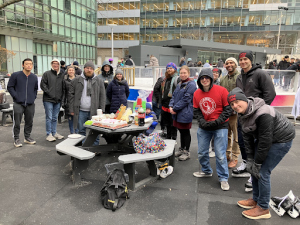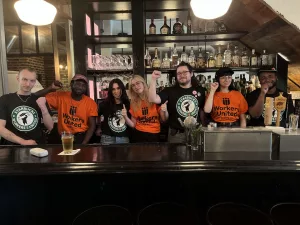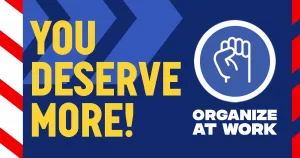With the increased media attention on the Senate’s attempt to pass the PRO Act — the most significant workers’ rights legislation in over half a century — and the ongoing Amazon union election in Bessemer, Alabama, it’s worthwhile to take a look back at our country’s organizing history and the circumstances that led to the first major labor reforms and the National Labor Relations Act (NLRA).
The Rise of Organized Labor
Into the 1920s, workers’ rights were doled out piecemeal: the Clayton Act of 1914, protecting trade unions from cartel accusations; the Wick’s Bill, addressing child labor laws; the Adamson Act, establishing an eight-hour workday, but only for interstate railroad workers. Each of these laws had its roots in specific strikes and actions by workers, but it was during the early 1930s when these movements intensified.
In 1934 alone, the show of union support was immense. In May, longshoremen at every port on the West Coast walked out on their jobs. After two strikers were killed by police, a general strike of 150,000 workers in the San Francisco Bay Area was called. At the same time, Teamsters in Minneapolis effectively shut down the city’s transportation of goods for two months, forcing the governor to call in the National Guard and business leaders to come to a new arrangement with workers. A month later, 10,000 autoworkers in Toledo, Ohio, went on strike — an event many regard as the birth of the modern automobile manufactures union — and nearly 400,000 textile workers from New England to Georgia went on strike during the summer of 1934.
All of these actions, and many more, put extensive pressure on President Roosevelt’s administration to address the inequity between the working and business class. It was from this national movement that the NLRA was passed less than a year later.
New Deal, Same Old Tricks
Signed into law in 1935, the NLRA was heralded as a cornerstone of President Franklin Delano Roosevelt’s New Deal platform. The bill set general rules on U.S. workers’ right to collective bargaining, protection from employment retaliation, and most importantly, the right to strike. It also established the National Labor Relations Board (NLRB), a federal agency tasked with enforcing these laws.
However, over the next several decades, corporate interests whittled away at the NLRA through measures like the Taft-Hartley Act and the Labor-Management Reporting and Disclosure Act of 1959, which left the NLRB oscillating between minimally functional during the Obama years to completely off the rails during the Trump administration.
The state of the American workforce today is eerily similar to the post-Depression era. Coming out of a major economic depression, millions of Americans are still without work and tens of millions have realized, due to the coronavirus pandemic, that they don’t have a say in how their workplaces are run. Many others, from domestic workers to farmworkers to the millions operating in the ever-growing gig economy, have realized they aren’t covered by the NLRA. For all of its good, the NLRA was also rooted in racism, excluding certain industries that had high concentrations of Black, Brown, and Asian workers. The need for new reform is devastatingly clear.
Workers Have the Power
There are two points to acknowledge here in regards to the struggle over labor law. First, it’s important to realize business leaders will never stop attacking worker-friendly laws. The fight for workers’ rights is one of continuous struggle that won’t end soon, even if laws such as the PRO Act are passed.
Second, it is always workers themselves who demand change and force reform, not elected officials. President Roosevelt is touted as a progressive champion of labor law, but it was not his singular will that created the NLRA. In fact, his National Industrial Recovery Act, passed two years before the NLRA, had been deemed overly generous to big business because it facilitated the growth of monopolies, which had a negative impact on working conditions.
Instead, it was decades of union actions across the U.S. that alerted the public to the inequities facing them in the workplace.
Protecting the Right to Organize
The call to organize and push for reform is growing. Support for unions hasn’t been higher in almost 80 years, and groups such as the Emergency Workplace Organizing Committee (EWOC) — a collaboration by DSA and UE, a union that embodies the worker-led spirit of progress — have made it their goal to educate and inform as many workers about their rights as they can.
Indeed, what makes EWOC similarly special is its rank-and-file mentality. Volunteers, many of whom are workers themselves, have dedicated their time to inform as many workers as they can about their rights. This has been made clear with DSA’s campaign to make 500,000 calls about the PRO Act.
The situation is the same as it was in 1935. Our politicians will give any excuse they can to avoid passing new reform. Pressure must come from the public to push the arc of labor law toward democracy. Sign on to voice your support to Pass the PRO Act. And if you want to learn how to organize your own workplace, talk with an organizer today!




